|
22. Colias alfacariensis Ribbe 1905 / Berger’s clouded yellow / Pieridae – Coliadinae
NL: valse luzernevlinder, zuidelijke luzernevlinder / D: Hufeisenklee-Gelbling, Hufeisenkleeheufalter / F: fluoré, le soufré austral
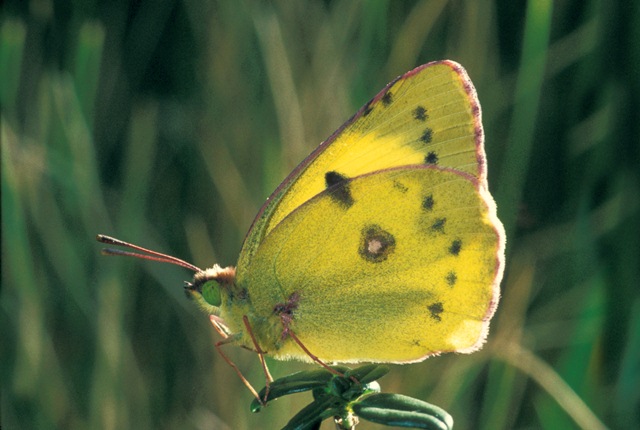 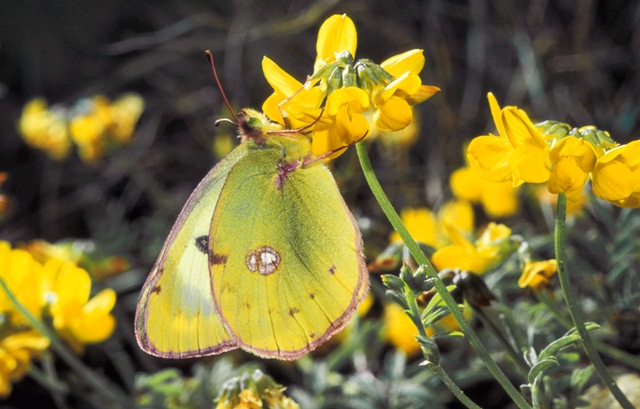
Photographs: Frits Bink ©.
Medium sized or large, wing length 23 (21-27) mm. In the Benelux this species is restricted to the southern part of Luxemburg and Wallonia, where it occurs on short grassland on chalk and on loess. It is nearly monophagous on horseshoe vetch and the occurrence of this plant makes it easy to recognise the suitability of a grassland site for this species.
Butterfly is on the wing from early-May up to early-October, there are two distinct peaks, late-May and mid-August. It occurs from sub-continental to mild continental climates, amplitude 7 up to 12, the required heat sum for two generations is 900°d and maximum tolerated 2900°d, corresponding climate windows 26 weeks and full year open.
In Europe the species occurs from 37° up to 52° latitude north, whereas Colias hyale reaches the boreal climate zone up to 63° latitude in Finland and in Siberia.
Ecological characteristics
Behaviour over time
Overwintering: half-grown in third instar on the upper side of the leaf of the host near to the ground.
Reproduction: oviposition starts after 8-10 days when the body contains 93 (81-109) eggs. Estimated potential production 1.6 times as much.
Larval feeding periods: in summer 26 (19-37) days in the period from June until end-August, the overwintering generation 30 (25-40) days in period end-August until early-October, in following spring 40 (32-50) from early-April until end-May.
Generations: at least two, a partial third one is possible.
Spreading of risk: flexibility in larval diapause.
Life cycle: egg 5 (4-7) days; larva summer 26 (19-37) days and in the case of overwintering 35-39 weeks; pupa 11 (8-15) days.
Life span of adult: rather long, 3 weeks.
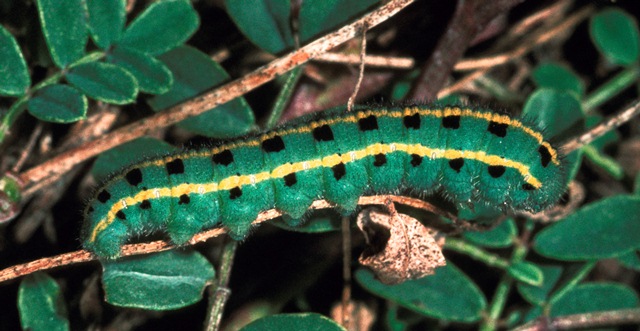 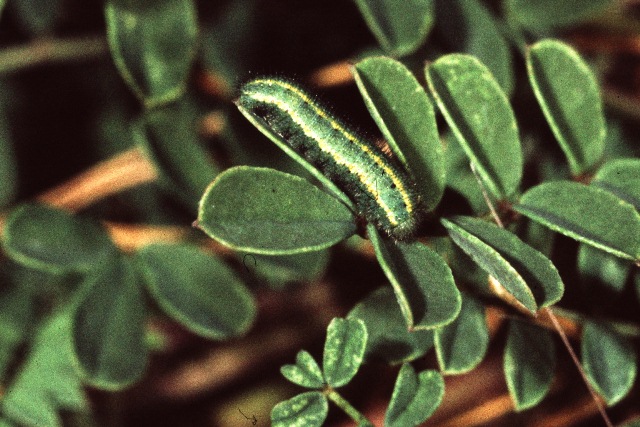
Photographs: Frits Bink ©.
Behaviour in space
From stay-at-home to migrant: stay-at-home, spatial requirement modest.
Finding a mate: courtship by pheromone release, male hovers in front of the female with vibrating wings.
Orientation in the landscape: open landscape with large areas of short grass.
Oviposition: on the upper side of mature leaves.
Defence
Threats from other organisms: full-grown larva camouflaged on its host when growing on a stony chalk soil.
Threats from the environment: better resistant to heat and drought than Colias hyale.
Feeding habits
Adult: nectar of all kind of flowers, in May those of horseshoe vetch are preferred.
Larva: feeds on mature leaves of fully exposed plants.
Larval foodplants
Plant species: Fabaceae, Hippocrepis comosa, sometimes also on small and prostrate plants of Securigera varia.
Journal
Rearing experiments based on specimens from Wintzfelden, France:
3 September 1981: first instar larvae collected from Hippocrepis comosa and Securigera varia growing as small, prostrate plants in a fallow field.
2 October: larva were 10 mm in size and had stopped eating. One larva displayed the typical yellow colouring.
24 October: larvae in diapause, 8-10 mm in size.
Overwintered outdoors.
5 February 1982: pot of Hippocrepis comosa taken indoors.
14 February: larvae started eating.
23 February: one larva moulted.
7 March: all larvae moulted, they liked basking.
18 March: one larva pupated.
22 March: next one pupated.
4 April: first adult appeared.
5 April: second one appeared.
Table 22-1. Results of dissections

Table 22-2. Collection and observation localities
D, Arnstein 50° 01’ 57”N – 9° 47’ 41”E; 22 July 1984.
D, Scherfede 51° 32’ 27”N – 9° 01’ 09”E; 20 June 1984.
B, Nîsmes, Tiènne-Breumont 215 m, 50° 04’ 40”N – 4° 32’ 35”E; 28 May 1982.
F, Aurel, 400 m, 44° 43’N – 5° 16’E; 29 August 1984.
F, Gap, 44° 35’N – 6° 04’E; 7 September 1982.
F, Maison-du-Bois 46° 57’ 57”N – 6° 25’ 17”E; 24 August 1984.
F, Montmédy 217 m, 49° 31’ 07”N – 5° 21’ 33” E; 12 June 1984, 27June 2002, 19 August 1984.
F, Lorraine, Damvillier 49° 21’ 27”N – 5° 24’ 21”E; 12 June 1984.
F, Lorraine, Dieue-sur Meuse 49° 05’ 11”N – 5° 27’ 25”E; 19 August 1984.
F, Vosges, le Zinnkoepfle 481 m, 47° 57’ 56”N – 7° 15’ 08”E; 22 August 1984.
Fig. 22-1. Colias alfacariensis, phenogram adapted from Fichefet et al. 2008: 75.
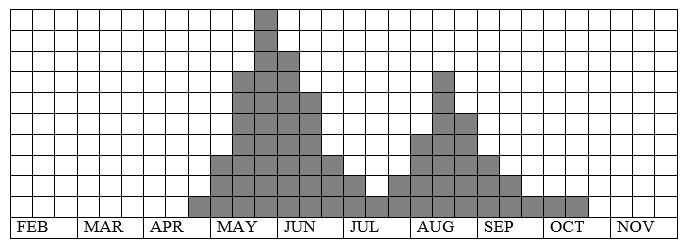
Fig. 22-2. Colias alfacariensis, habitat characteristics.
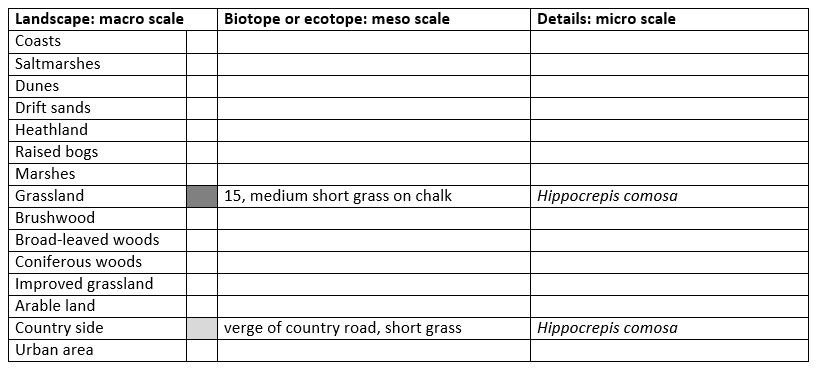
Fig. 22-3. Colias alfacariensis, climate matrix, heat-sums 900 (2 gen.) - 2300°d.
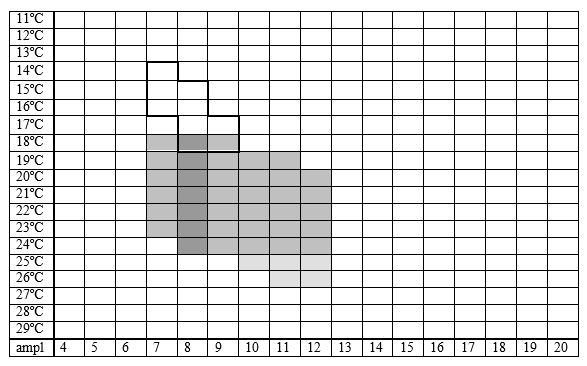
|









